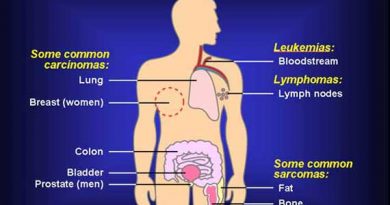Your heart rhythm – What you should know
 With this month highlighting heart rhythm awareness, ER24 is urging people to familiarise themselves with a condition called arrhythmia.
With this month highlighting heart rhythm awareness, ER24 is urging people to familiarise themselves with a condition called arrhythmia.
Arrhythmia is a condition in which the heart beats abnormally.
The heart could either be beating rapidly or chaotically, slower or faster than normal or some beats could be triggered too early.
The normal adult heart rate at rest ranges from 60 to 100 beats per minute.
However, it is important to note that having a heartbeat faster than 100 beats per minute or lower than 60 beats per minute does not always mean there is a problem. During exercise for example you will develop a faster heartbeat. During sleep your heartbeat may be slower than normal. If you are physically fit, your normal resting heartbeat may also be significantly lower than 60 beats a minute.
In the case of arrhythmias, they can be harmless, serious or life threatening.
Causes of arrhythmias include disease of the heart muscle, coronary arteries or valves, disease of the electrical system of the heart, damage from a heart attack, high blood pressure, diabetes, smoking, excessive alcohol or caffeine intake, stress and some medications.
While with some arrhythmias you may not notice symptoms, if you do, they may include shortness of breath, dizziness, fatigue, fainting, sweating, discomfort in your chest or palpitations.
In more serious arrhythmias you could suffer a stroke or go into cardiac arrest.
Glenda Marcer, the director of Arrhythmia Alliance, which aims to improve diagnosis and treatment of cardiac arrhythmia as well as improve the lives of people with the condition, said arrhythmia is common in South Africa.
“We try to create awareness about abnormal heart rhythms. Many people are not aware there is such a thing. If you are unsure whether your heartbeat is normal or not, consult a doctor,” said Marcer.
She added that the public should be aware that arrhythmia affects people of all ages. “A lot of people are under the impression that cardiac disease is an old person’s disease and this is false. We see young children with cardiac disease as well,” said Marcer.
Cardiac arrest
Arrhythmia Alliance has a number of initiatives in place to bring about awareness and reduce cardiac arrests.
“We are promoting the use of Automated External Defibrillators (AEDs), an emergency life-saving device used to restart the heart, at sporting events at schools for example, and highlighting the importance of people being trained to perform cardiopulmonary resuscitation (CPR). We hear about children as well as other athletes dying on a sports field. They did not necessarily have to die. They could have been resuscitated. We are trying to bring about awareness that early defibrillation save lives,” said Marcer.
How to check your pulse:
You can feel your pulse to determine how fast your heart is beating. You can feel your pulse on your wrist by placing the tips of your index and middle fingers on the inner wrist of your other arm, just below the bottom of your thumb. Press your wrist lightly until you feel your pulse. Count the number of beats in 30 seconds and multiply by two to determine your heart rate in beats per minute.
Issued by:
Chitra Bodasing
ER24 spokesperson




